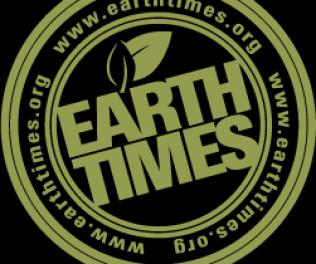In 1970 flower power and the hippie culture were at their height, but 1970 was also a time of protest in the United States. For more than a decade the Vietnam War had dominated the lives of countless families. The death toll continued to rise and for those who returned home unscathed there were many more who were maimed in body or mind. Concerted protest was growing in many quarters, particularly from among the student population, but there was still no apparent end in sight.
The Black Power Movement was also at its height. Two years earlier Martin Luther King, one of the heroes of the Black Civil Rights Movement, had been assassinated and the country was still reeling from the aftermath of this. Although segregation was coming to an end, the thought that there might one day be a black US president was still beyond the wildest imaginings of most protesters.
One area where there had been little indication of protest was concern about the environment. Massive V8 sedans, running on leaded petrol, were the favoured means of transport and smoke, sludge and industrial effluent were regarded as by-products of a successful society. Air pollution was accepted as a symbol of prosperity.
Environmental concern may have been limited, but it was there, even if it was below the surface. In 1962 Rachel Carson's best-selling book Silent Spring began to raise public awareness, but it was not until 1970 that Earth Day actually came into being.
Credit for the idea goes to the exotically named Gaylord Nelson, a Senator from Wisconsin. He had been appalled by the lack of government action following a massive oil spill off the coast of California. Inspired by the vigorous student anti-war movement he worked hard to channel some of that energy to raise public awareness of environmental issues.
His choice of date for Earth Day might seem somewhat bizarre, but Gaylord Nelson chose 22nd April because he wanted a large student support and this date did not fall during exams or spring breaks, did not conflict with any major religious holidays and was late enough in the spring to have a reasonable chance of good weather. Also, in 1970 22ndApril fell on a Wednesday and the middle of the week seemed like a good day.
The date has stuck, althought some people observing Earth Day around the time of the March equinox is far more logical. In 1978, American anthropologist Margaret Mead added her support for the equinox Earth Day, since in her view the selection of the March Equinox for Earth Day made it much easier to achieve a shared planetary event.
An astonishing 20 million people took part in the first Earth Day in 1970 and in the United States this eventually led to the creation of the US Environmental Protection Agency and the passing of the Clean Air, Clean Water and Endangered Species Acts.
For 1990 it was decided that Earth Day should go global and 200 million people were mobilised in 141 countries. One feature was a Peace Climb of Mount Everest involving climbers from the United States, China and the Soviet Union. This was the first time in history that climbers from these three nations had taken part in a joint expedition. With the help of support groups along the way the climbers managed to collect over two tons of rubbish that had been left on the mountain by previous climbers.
For the millennium it was decided to focus attention on global warming and the push for clean energy. 5000 environmental groups in 184 countries combined to reach out to hundreds of millions of people. For the first time the internet was the principal organising tool.
Earth Day has now become an annual international event on 22nd April. Organisations large and small typically celebrate it with outdoor performances, where individuals or groups perform acts of service to earth. These can include planting trees, picking up roadside rubbish, conducting various programmes for recycling and conservation, and using recyclable containers for snacks and lunches.
Other activities include encouraging people to sign petitions to governments calling for stronger or immediate action to stop global warming and to reverse environmental destruction.
The organisers of Earth Day 2012 are still frustrated by the continuing failure of successive governments to take steps to protect and preserve the environment. This year's campaign is designed to provide people with the opportunity to unite their voices in a call for a sustainable future.
The overall demand is for immediate action to secure 'Renewable Energy for All' and a sustainable future for our planet. These are bold and far reaching demands and it would be wonderful to think that the governments of the world might all take notice and leap into united action.
.earthtimes.org
Τελευταία νέα
- EUROPALSO: Προσωπικός Αριθμός – Τι Είναι – Πως Εκδίδεται
- EUROPALSO - φορολογικές υποχρεώσεις ιούνιος 2025
- EUROPALSO: Απογραφή υφιστάμενων αδειών ΚΞΓ <75 σε πληροφοριακό σύστημα OpenBusiness έως 1/12/2025
- EUROPALSO Εγκύκλιος 13/06/2025: Απογραφή ΚΞΓ σε OpenBusiness – WaterFun WaterPark – Βεβαιώσεις σπουδών για ΚΞΓ Society – ESB Online Exams for Adults – Νέες Παροχές για ΚΞΓ ESB – Advisory Offices – Υποχρεώσεις Ιουνίου 2025
- Δωρεάν Webinar: Partners in...Creativity! Transforming EFL through Human - AI Collaboration
- 1st Burlington Community Festival: ΔΩΡΕΑΝ για εκπαιδευτικούς και μαθητές 10/5 - Ίδρυμα Σταύρος Νιάρχος
- EUROPALSO Εγκύκλιος 29/04/2025: Απογραφή ΚΞΓ σε OpenBusiness – ESB Online Exams for Students, Κυριακή, 1/6 – ESB Online Exams for Adults – Νέες Παροχές για ΚΞΓ ESB – Advisory Office – Βεβαιώσεις σπουδών – Τουρνουά Σκάκι, 10/5 – Υποχρεώσεις Μαΐου, Νέα ωρομίσθια
- Απογραφή Κέντρων Ξένων Γλωσσών: Διευκρινήσεις Europalso
- Απογραφή Λειτουργίας Φροντιστηρίων και Κέντρων Ξένων Γλωσσών στο OpenBusiness
- EUROPALSO - ΦΟΡΟΛΟΓΙΚΕΣ ΥΠΟΧΡΕΩΣΕΙΣ ΜΑΙΟΣ 2025




